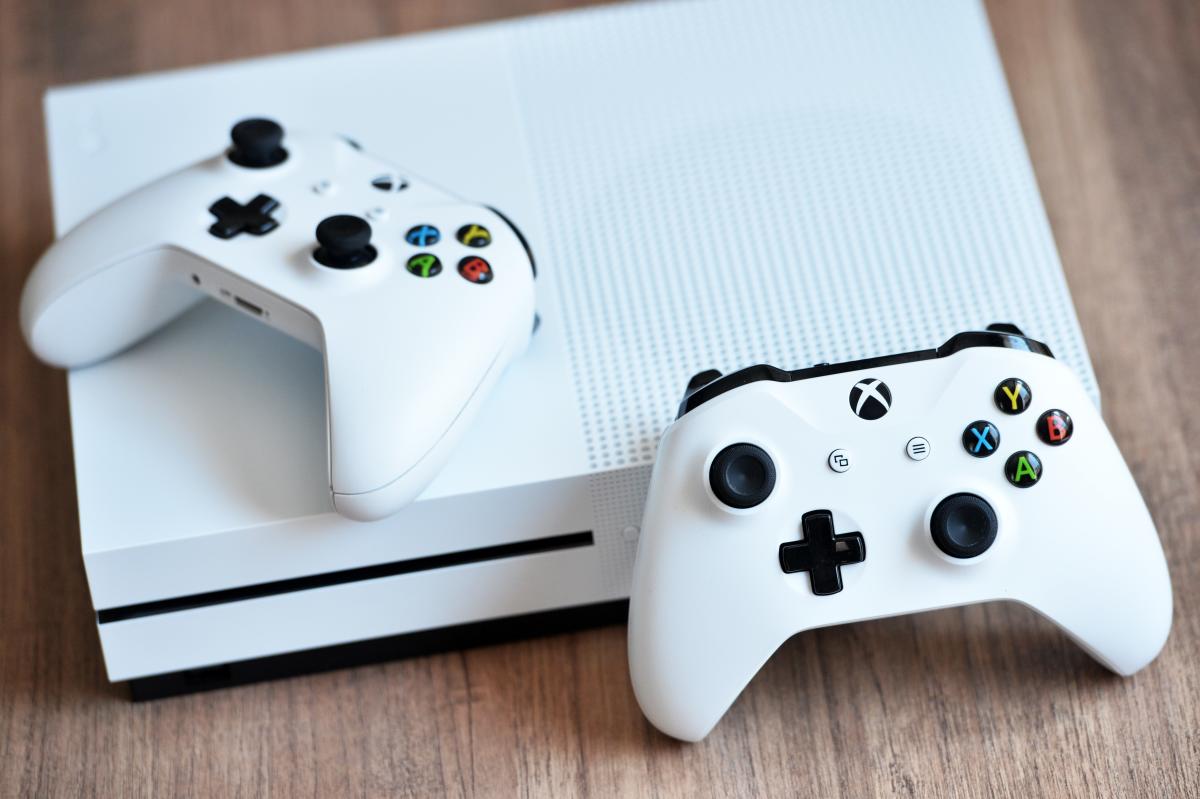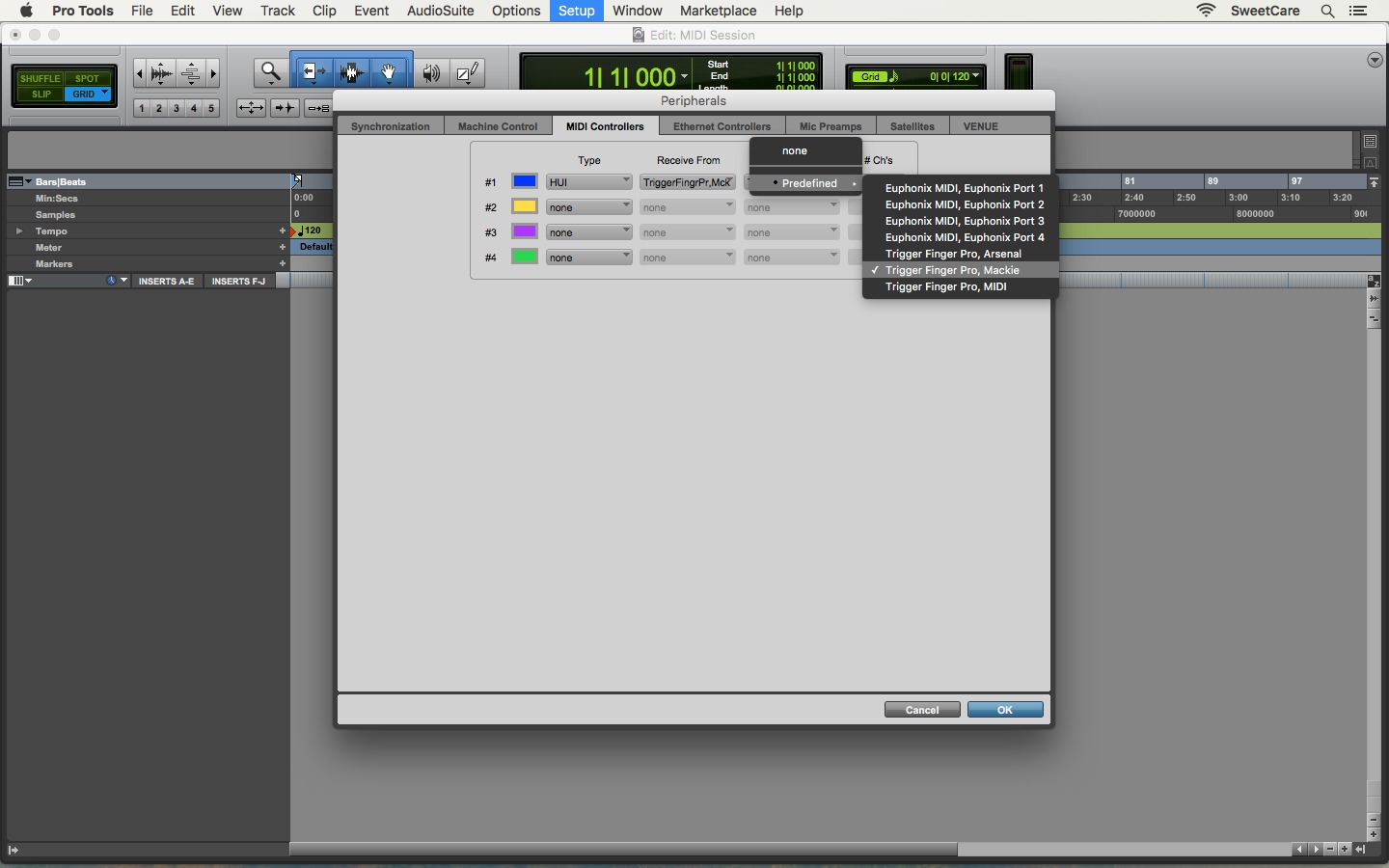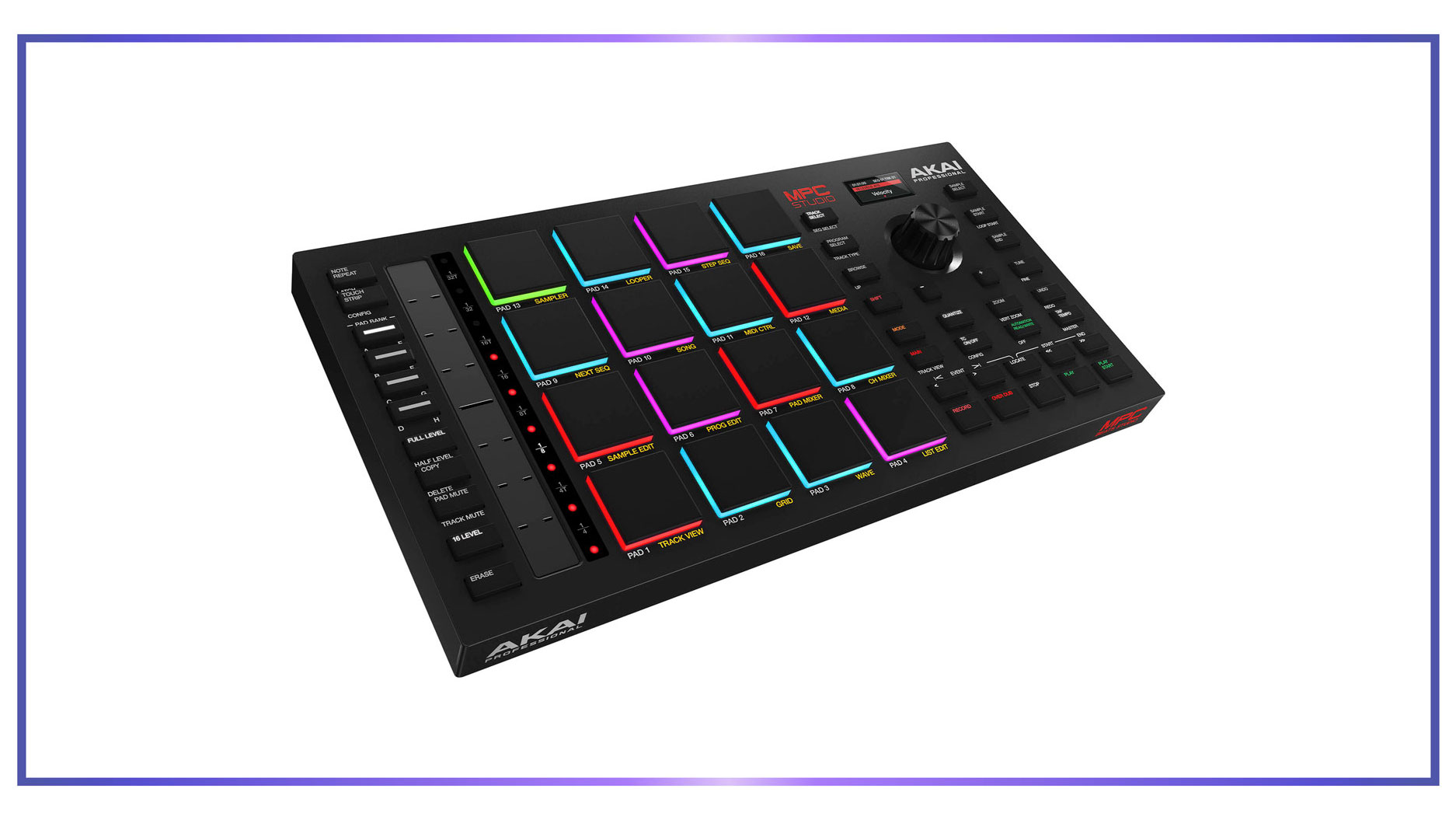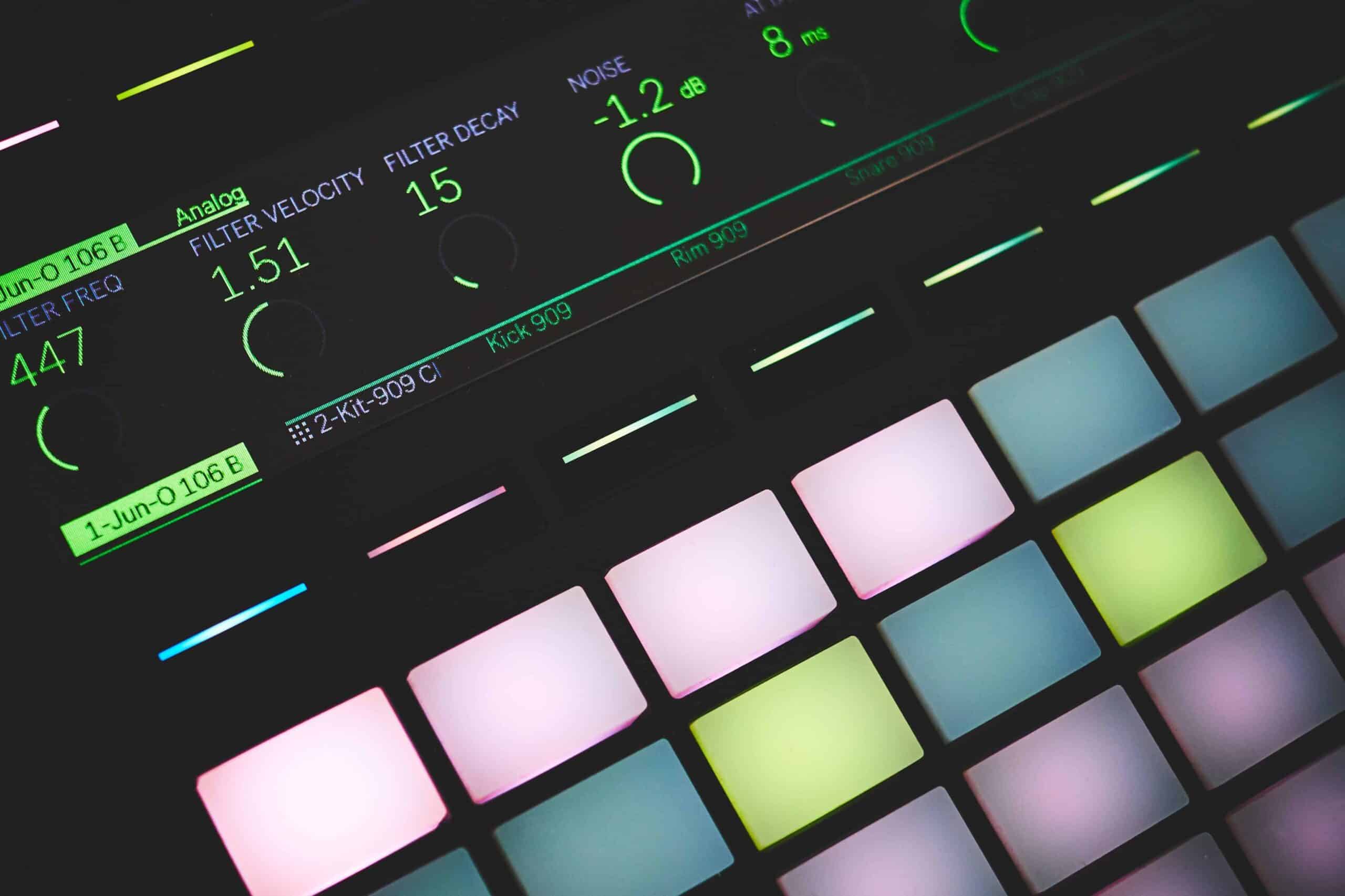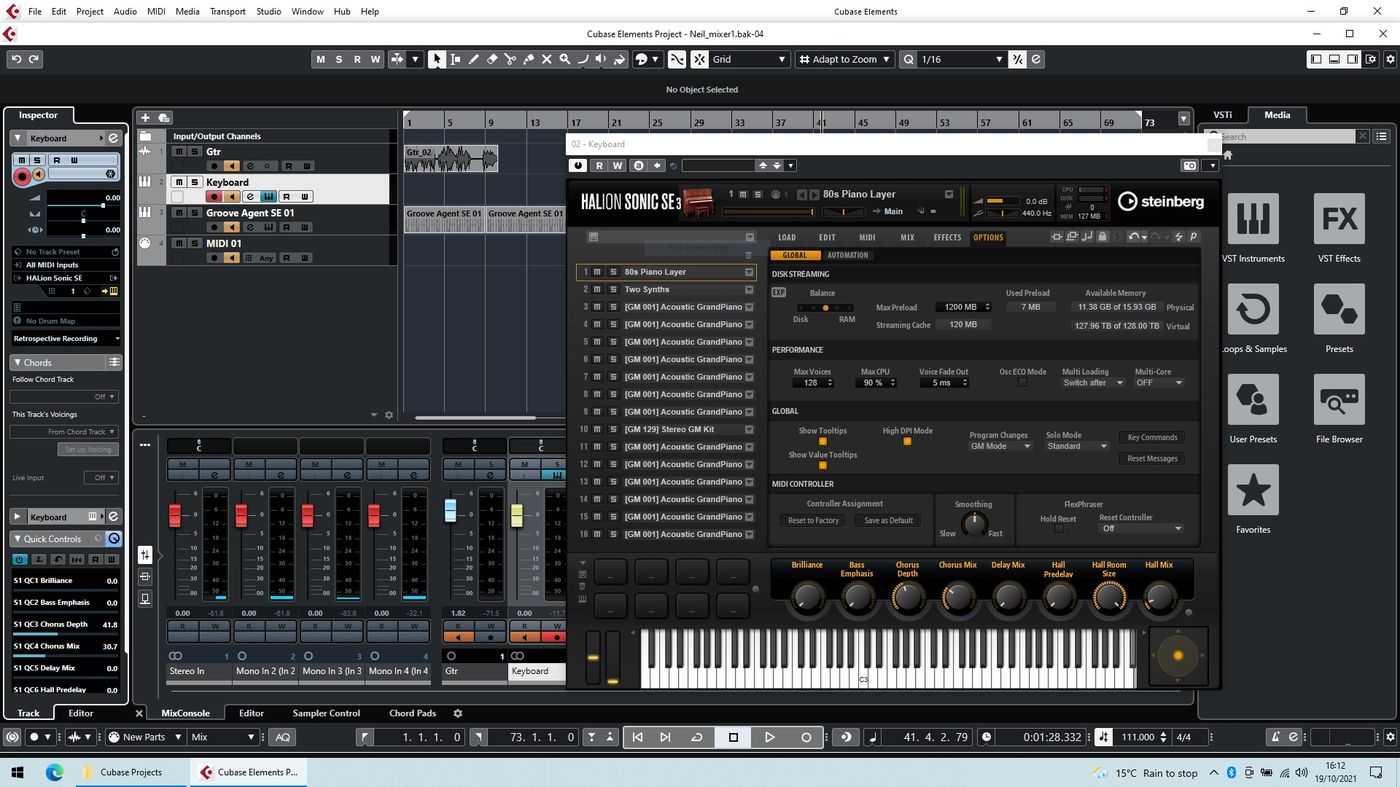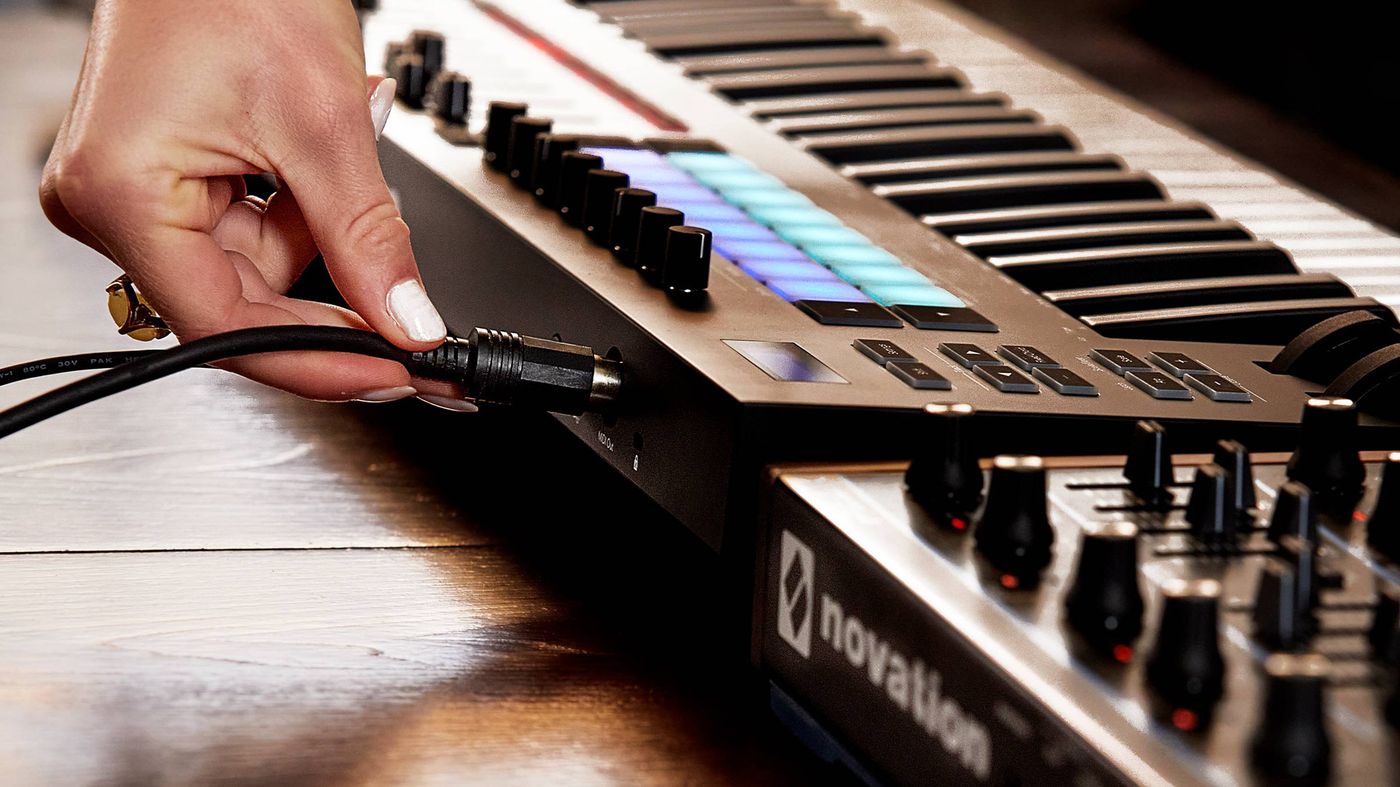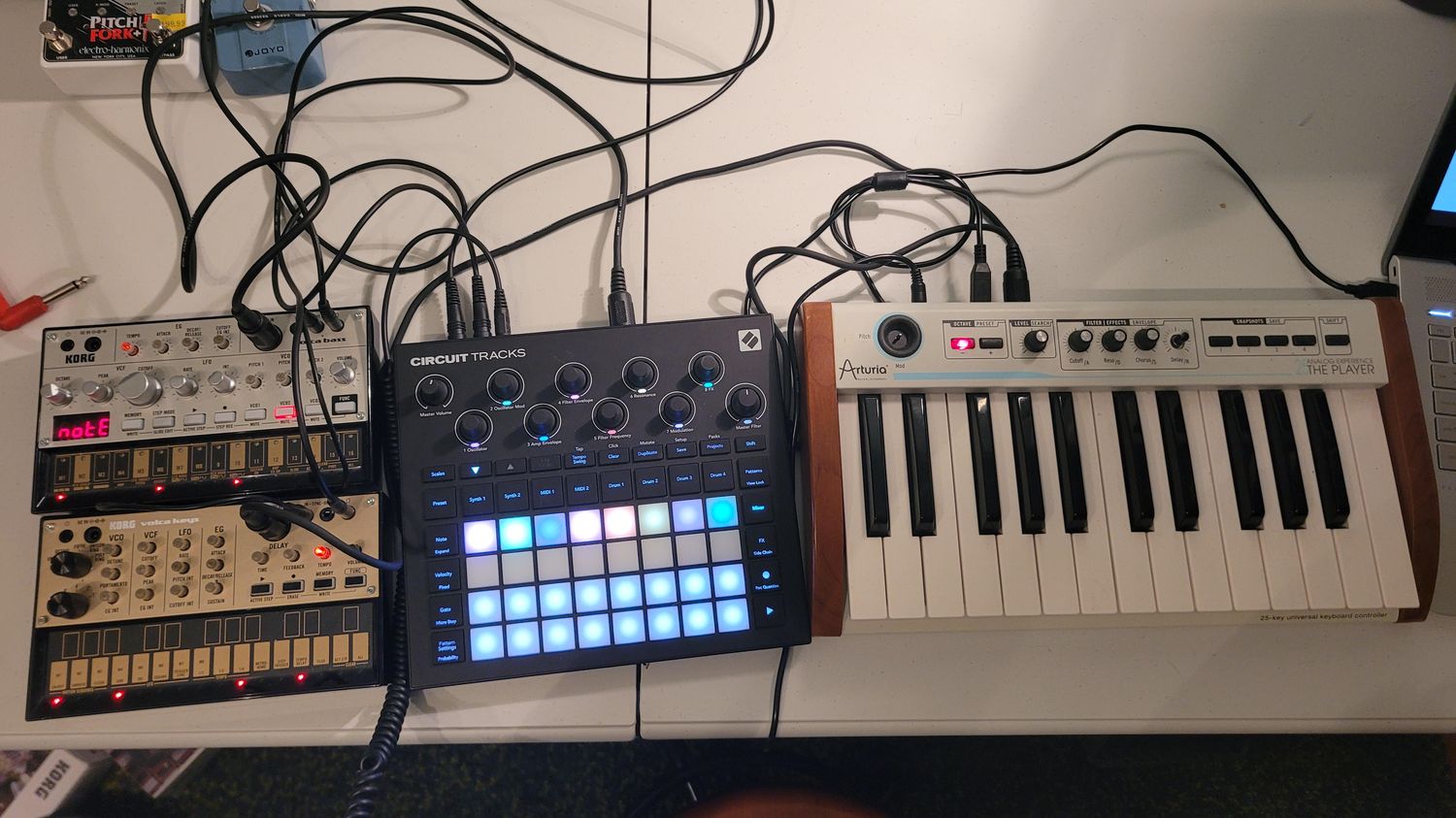Home>Production & Technology>MIDI>What Is A MIDI Controller


MIDI
What Is A MIDI Controller
Published: February 22, 2024
Learn all about MIDI controllers and their uses. Discover how MIDI technology revolutionizes music production and performance.
(Many of the links in this article redirect to a specific reviewed product. Your purchase of these products through affiliate links helps to generate commission for AudioLover.com, at no extra cost. Learn more)
Table of Contents
Introduction
MIDI technology has revolutionized the music industry, offering musicians and producers an unparalleled level of creativity and flexibility. In the digital age, MIDI controllers have become indispensable tools for musicians, DJs, and producers, enabling them to manipulate and control various aspects of sound and music production with precision and ease. Whether you're a seasoned music professional or an aspiring enthusiast, understanding the role and functionality of MIDI controllers is essential for harnessing the full potential of modern music production.
The world of MIDI controllers is vast and diverse, encompassing a wide range of devices designed to interact with digital audio workstations (DAWs), software synthesizers, and other music production tools. From compact keyboard controllers to pad-based interfaces and innovative touch-sensitive devices, MIDI controllers come in various forms, each catering to specific musical styles and production requirements.
In this article, we will delve into the intricacies of MIDI controllers, exploring their fundamental principles, diverse applications, and the factors to consider when choosing the right controller for your musical endeavors. Whether you're a pianist looking to integrate electronic sounds into your performances, a DJ seeking intuitive control over live remixing, or a producer sculpting intricate soundscapes, understanding the capabilities of MIDI controllers is crucial for unleashing your creative potential.
Join us as we embark on a journey through the fascinating realm of MIDI controllers, unraveling their inner workings, exploring their versatility, and providing valuable insights to help you navigate the ever-evolving landscape of music production technology. By the end of this exploration, you will not only grasp the essence of MIDI controllers but also gain valuable knowledge to inform your decisions when selecting the perfect controller to complement your musical aspirations.
What is MIDI?
MIDI, which stands for Musical Instrument Digital Interface, is a versatile and widely adopted protocol that has redefined the landscape of music creation and performance. It serves as a standardized communication language that enables electronic musical instruments, computers, and other devices to interact seamlessly. Unlike audio signals, which capture the actual sound produced by an instrument, MIDI data represents the instructions and parameters necessary to generate and control sound.
At its core, MIDI functions as a universal language for musical devices, allowing them to communicate and synchronize with each other. This communication encompasses a broad spectrum of musical elements, including note pitches, duration, velocity, modulation, and more. When a musician plays a MIDI-enabled keyboard, for example, the instrument generates MIDI data that contains information about which notes were played, how forcefully they were struck, and various nuances of expression. This data is then transmitted to a MIDI-compatible device, such as a synthesizer or computer, where it is interpreted and used to produce sound.
One of the key advantages of MIDI is its non-destructive nature, meaning that the original musical performance is not altered or degraded during the transmission and processing of MIDI data. This allows for extensive manipulation and editing of musical elements without compromising the integrity of the original performance. As a result, MIDI has become an indispensable tool in modern music production, enabling musicians and producers to refine and enhance their compositions with unparalleled precision.
Furthermore, MIDI is not limited to traditional musical instruments; it also extends its capabilities to a wide array of devices, including drum machines, samplers, sequencers, and even lighting systems for live performances. This versatility has made MIDI a fundamental component of contemporary music production, live performances, and multimedia applications.
In essence, MIDI serves as the backbone of modern music technology, facilitating seamless communication between musical instruments, software applications, and audio hardware. Its universal compatibility and rich set of expressive capabilities have solidified its position as an indispensable tool for musicians, producers, and performers across the globe. As we continue our exploration of MIDI controllers, it is essential to grasp the fundamental principles of MIDI and its pivotal role in shaping the ever-evolving landscape of music creation and performance.
What is a MIDI Controller?
A MIDI controller is a versatile device that serves as a bridge between the physical world of musicians and the digital realm of music production. Unlike traditional musical instruments that produce sound directly, MIDI controllers generate and transmit MIDI data to trigger and manipulate sound in electronic devices such as synthesizers, samplers, and software instruments. Essentially, a MIDI controller acts as a tactile interface through which musicians can interact with and control various parameters of sound production and manipulation.
These controllers come in a diverse array of forms, each tailored to specific musical applications and performance styles. From keyboard controllers that mimic the layout of a piano keyboard to pad-based controllers designed for triggering samples and loops, the world of MIDI controllers offers a wide range of options to suit different musical preferences and production workflows.
One of the defining characteristics of MIDI controllers is their ability to convey expressive nuances of musical performance through MIDI data. For example, a keyboard controller can transmit information about the velocity and duration of key presses, allowing musicians to convey subtle variations in dynamics and articulation. Similarly, pad controllers enable drummers and electronic music producers to trigger percussive elements with precision, incorporating rhythmic intricacies into their compositions.
In addition to traditional input methods, modern MIDI controllers often feature a wealth of assignable controls such as knobs, faders, and touch-sensitive surfaces. These elements provide musicians and producers with hands-on control over parameters such as volume, effects, and synthesizer parameters, fostering a dynamic and intuitive approach to shaping sound in real time.
Furthermore, MIDI controllers are not limited to musical performance alone; they also play a crucial role in live sound manipulation, studio recording, and electronic music production. Their seamless integration with digital audio workstations (DAWs) and software instruments empowers musicians to craft intricate compositions, experiment with sonic textures, and deliver captivating live performances with unparalleled flexibility and creativity.
In essence, a MIDI controller serves as a catalyst for musical innovation, empowering musicians to transcend the limitations of traditional instruments and explore new frontiers of sound design and performance. Its ability to merge tactile interaction with digital precision has revolutionized the way music is created, performed, and experienced, making it an indispensable tool for musicians and producers in the digital age.
Types of MIDI Controllers
MIDI controllers encompass a diverse range of devices, each tailored to specific musical applications and performance styles. Understanding the various types of MIDI controllers is crucial for selecting the right tool to suit your musical preferences and production workflows. Here are some of the prominent types of MIDI controllers:
-
Keyboard Controllers: These controllers feature piano-style keyboards with velocity-sensitive keys, allowing musicians to play melodies, chords, and intricate musical passages with expressive dynamics. They often include additional controls such as knobs, sliders, and modulation wheels, providing versatile manipulation of sound parameters.
-
Pad Controllers: Designed for triggering samples, loops, and percussive elements, pad controllers offer drummers and electronic music producers an intuitive platform for rhythm programming and live performance. The responsive pads enable precise triggering of sounds, making them indispensable for beat-making and electronic music production.
-
DJ Controllers: Tailored for DJs and electronic music performers, DJ controllers integrate elements such as jog wheels, faders, and performance pads to facilitate seamless mixing, scratching, and remixing of tracks. These controllers often feature built-in audio interfaces and comprehensive software integration for dynamic live performances.
-
Fretted Controllers: Fretted MIDI controllers emulate the layout and playing techniques of stringed instruments such as guitars and basses. They enable guitarists and bassists to harness the expressive capabilities of MIDI, allowing for innovative sound manipulation and integration with virtual instruments and effects.
-
Wind Controllers: These controllers are designed to replicate the experience of playing wind instruments such as saxophones and flutes. They capture breath control and embouchure techniques, translating them into expressive MIDI data for nuanced performance and interaction with virtual wind instruments.
-
Grid Controllers: Characterized by a grid of buttons or touch-sensitive pads, grid controllers offer a versatile platform for launching clips, triggering samples, and creating dynamic musical arrangements. They are popular in electronic music performance and live improvisation, providing seamless integration with loop-based production software.
-
Mixed Controllers: Some MIDI controllers combine multiple input elements such as keys, pads, and assignable controls, offering a comprehensive interface for versatile music production and performance. These mixed controllers cater to diverse musical styles and production requirements, providing a unified platform for expressive creativity.
Each type of MIDI controller brings unique capabilities and performance possibilities, catering to the diverse needs of musicians, producers, and performers across various genres and musical contexts. Understanding the distinct features of each controller type empowers individuals to make informed decisions when selecting the ideal tool to augment their musical endeavors.
How MIDI Controllers Work
MIDI controllers operate by translating physical gestures and interactions into digital signals, allowing musicians and producers to manipulate and control various aspects of sound production and performance. At the core of their functionality lies the ability to generate and transmit MIDI data, which serves as the communication medium between the controller and MIDI-compatible devices such as synthesizers, samplers, and software instruments.
When a musician interacts with a MIDI controller, whether it's pressing keys on a keyboard, triggering pads, or manipulating assignable controls, the device captures these actions and converts them into MIDI messages. These messages contain information about the specific actions performed, such as which notes were played, the velocity of key presses, the position of control knobs, and other expressive nuances of performance.
Once the MIDI messages are generated, they are transmitted via standard MIDI protocols to connected devices, where they are interpreted and utilized to produce sound or control various parameters of music production. This seamless transmission of MIDI data enables musicians to exert precise control over elements such as pitch, dynamics, modulation, and effects, shaping the sonic landscape with unparalleled accuracy and finesse.
Furthermore, MIDI controllers often feature assignable controls that allow users to map specific parameters within software instruments or digital audio workstations (DAWs) to physical knobs, sliders, or touch-sensitive surfaces. This integration enables real-time manipulation of sound parameters, offering a dynamic and tactile approach to shaping and sculpting musical elements.
In the context of live performance, MIDI controllers play a pivotal role in enabling musicians to interact with electronic instruments and software in a manner that transcends the limitations of traditional instruments. Whether it's triggering samples, modulating synth parameters, or creating intricate rhythmic patterns, MIDI controllers empower performers to deliver captivating and expressive performances with unparalleled versatility.
The seamless synergy between physical interaction and digital control positions MIDI controllers as indispensable tools for musicians and producers seeking to expand their creative horizons. By bridging the gap between human expression and digital manipulation, MIDI controllers unlock a world of sonic possibilities, empowering individuals to channel their musical visions with precision and artistry.
Choosing the Right MIDI Controller
Selecting the right MIDI controller is a pivotal decision that hinges on a myriad of factors, including musical preferences, performance requirements, and production workflows. With a diverse array of controller types and features available, it's essential to consider several key aspects to ensure that the chosen controller aligns seamlessly with your creative aspirations.
Musical Style and Performance Needs
Understanding your musical style and performance needs is paramount when choosing a MIDI controller. For pianists and keyboardists, a keyboard controller with weighted or semi-weighted keys and expressive dynamics may be the ideal choice, offering a familiar playing experience akin to a traditional piano. On the other hand, electronic music producers and beatmakers may gravitate towards pad controllers, renowned for their intuitive rhythm programming capabilities and sample triggering functionalities. DJs and live performers may find DJ controllers with integrated jog wheels and performance pads to be indispensable for seamless mixing and remixing during live sets.
Integration with DAWs and Software Instruments
Consider the compatibility and integration of the MIDI controller with your preferred digital audio workstation (DAW) and software instruments. Many controllers are designed to seamlessly integrate with specific DAWs, offering dedicated control surfaces and pre-mapped functionalities for streamlined music production. Additionally, the availability of driverless operation and plug-and-play compatibility can significantly enhance the user experience, allowing for effortless setup and immediate integration into your production environment.
Control Elements and Customization
Evaluate the control elements and customization options offered by the MIDI controller. Whether it's assignable knobs, faders, touch strips, or touch-sensitive pads, having a versatile array of control elements can empower you to manipulate sound parameters, automate effects, and sculpt intricate sonic textures with precision. The ability to customize and map these controls to suit your specific production requirements can greatly enhance your workflow and creative expression.
Portability and Ergonomics
For musicians and performers on the move, the portability and ergonomics of a MIDI controller are crucial considerations. Compact and lightweight controllers are ideal for mobile setups and on-the-go performances, offering flexibility without compromising functionality. Additionally, ergonomic design features such as responsive pads, comfortable keybeds, and intuitive layout contribute to a seamless and enjoyable playing experience, especially during extended studio sessions and live performances.
Expandability and Future-Proofing
Anticipating future growth and creative exploration is essential when selecting a MIDI controller. Controllers that offer expandability through additional hardware integration, modular components, or firmware updates can adapt to evolving production needs and technological advancements. Furthermore, considering the longevity and support provided by the manufacturer, including firmware updates, driver compatibility, and ongoing software enhancements, can ensure that your investment remains relevant and reliable in the long run.
By carefully evaluating these considerations and aligning them with your musical objectives and production workflows, you can make an informed decision when choosing the right MIDI controller. Ultimately, the ideal controller seamlessly integrates into your creative process, empowering you to unleash your musical potential and embark on a journey of sonic innovation and expression.
Conclusion
In conclusion, the world of MIDI controllers represents a dynamic and transformative landscape where the realms of musical performance, production, and creativity converge. From the expressive keystrokes of keyboard controllers to the rhythmic intricacies of pad-based interfaces, MIDI controllers have redefined the possibilities of sound manipulation and performance, empowering musicians and producers to sculpt intricate sonic landscapes with unparalleled precision and artistry.
The evolution of MIDI technology and its seamless integration with a myriad of musical devices and software applications have propelled MIDI controllers into the forefront of modern music production. Their ability to bridge the tactile nuances of human expression with the boundless potential of digital sound manipulation has revolutionized the way music is created, performed, and experienced.
As we navigate this diverse ecosystem of MIDI controllers, it becomes evident that these devices are not merely tools; they are conduits for musical innovation and self-expression. Whether it's the seamless integration of DJ controllers into electrifying live sets, the intuitive performance capabilities of pad controllers for electronic music production, or the expressive dynamics of keyboard controllers for emotive compositions, MIDI controllers have become indispensable companions for musicians across genres and disciplines.
Furthermore, the versatility and adaptability of MIDI controllers transcend the boundaries of traditional musical instruments, offering a canvas for sonic experimentation and exploration. They enable musicians to transcend the limitations of physical instruments, opening doors to new sonic territories and creative possibilities that were once beyond reach.
In the ever-evolving landscape of music technology, the role of MIDI controllers continues to expand, offering new avenues for musical expression, collaboration, and performance. As technology advances and musical styles evolve, MIDI controllers will undoubtedly remain at the forefront of innovation, serving as catalysts for artistic growth and sonic exploration.
Ultimately, the journey through the realm of MIDI controllers is a testament to the boundless creativity and ingenuity of musicians and producers worldwide. As we embrace the transformative power of MIDI controllers, we embark on a collective journey of sonic discovery, where the boundaries of musical expression are redefined, and the art of sound creation is elevated to new heights.

